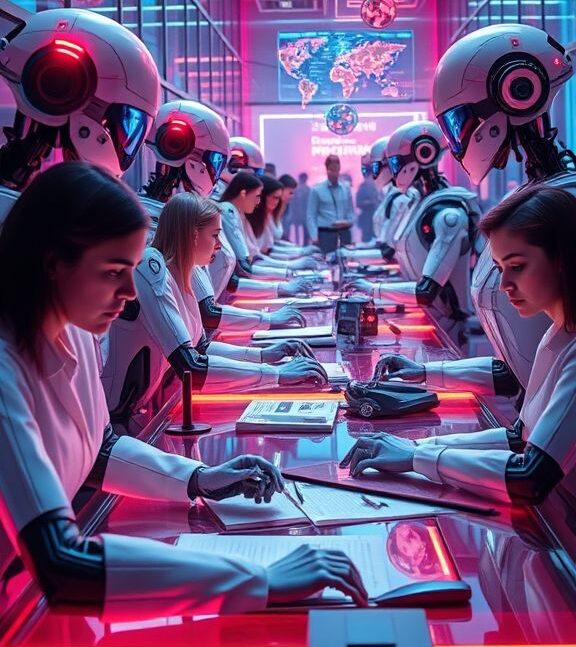-
28 Jobs on Trial: AI’s Verdict on the Future of Work
Introduction This ranking is based on current trends in artificial intelligence and automation. It outlines 28 job roles that may be significantly transformed or automated by AI systems (such as the O3 model) in the near future. The list is arranged from those most likely to be automated to those less likely, considering factors such […]
-
TOP 5 Image Generation tools – comparison
Comparing AI Image Generation Tools: Tabby Cat on a Windowsill AI-driven image generation tools have made it easier than ever to bring creative ideas to life. But how do these tools compare when given the exact same task? To find out, I tested six popular image generators using a single, detailed prompt and analyzed the […]
-
When Small Players Earn Billions: How AI Gives Them an Edge Over Giants
Can a Small Company with 42 Employees Threaten Giants Like Amazon or Google? 😲 Yes—if it has artificial intelligence on its side! AI is changing the rules of the game, allowing young companies to gain an advantage they could only dream of before. An example? OnlyFans—in 2024, the platform generated $6.3 billion in revenue with… […]
❗Instagram and Snapchat
We’ve all heard the story of Facebook’s $3 billion offer to buy Snapchat back in 2013. While Snapchat ultimately turned down the offer, it’s hard not to wonder what could have been. Without Snapchat’s “Stories” feature, would Instagram have rolled out its own version? Fast forward to today and Instagram has added 250 million users to its “Stories” feature in just one year, while Snapchat’s stock price has taken a hit.
❗Indiegogo and Kickstarter
Did you know that Indiegogo, a crowdfunding site responsible for projects like Oculus Rift and Pebble watch, actually launched in 2008 – a full year before Kickstarter? Despite this, Kickstarter is often considered the “grandfather” of online crowdfunding.
❗ TikTok and Dubsmash
Another example is TikTok, the viral app where teens post videos of themselves dancing and lip syncing to hit songs. However, before it became TikTok, the app was known as Musically. In 2018, ByteDance merged Musically into TikTok, bringing a new level of popularity to the platform.
In the early years of Dubsmash, celebrities flocked to the app. In 2015, Rihanna teased the release of her single “B—- Better Have My Money” by posting a preview on Dubsmash.
There are more not-as-obvious cases including:
🏖 Airbnb copied the concept of online vacation rental bookings from existing websites like VRBO and HomeAway
🎵 Spotify was one of the first companies to popularize the concept of a “freemium” service, later copied by other music streaming services like Pandora and Apple Music.
🍕 Grubhub and DoorDash, brought the concept of restaurant food delivery by aggregating all the delivery services in one place later copied by other similar companies like UberEats, Postmates, and Deliveroo.
———————————————-
💡Unlike a chemical compound, business models cannot be patented. Once a successful business model is developed, it depends on execution if the original business model inventor can extract value quickly or somebody else will capture value in the long run.
❌ On the other hand there are even more examples of companies which although had all the means, they didn’t manage to clone success like Twitter Fleets, Google+ (Facebook clone) or Amazon Fire Phone.
It seems like a confirmation that idea is responsible only for 1% of success.

Co-Founder @ MDBootstrap.com / Forbes 30 under 30 / EO'er
For years I've been working as an IT Consultant in countries like Netherlands, Belgium, Poland or India developing enterprise class systems for the biggest companies within domain.
Since 2016 I'm co-founder of MDBotstrap.com - world class UI Framework used by NASA, Amazon, Nike, Airbus, Samsung, Apple and many other Fortune 500 Companies.
All author posts

